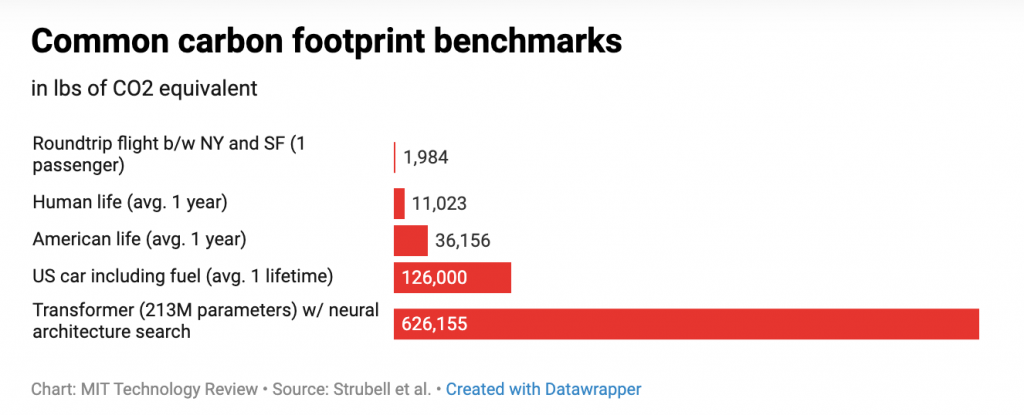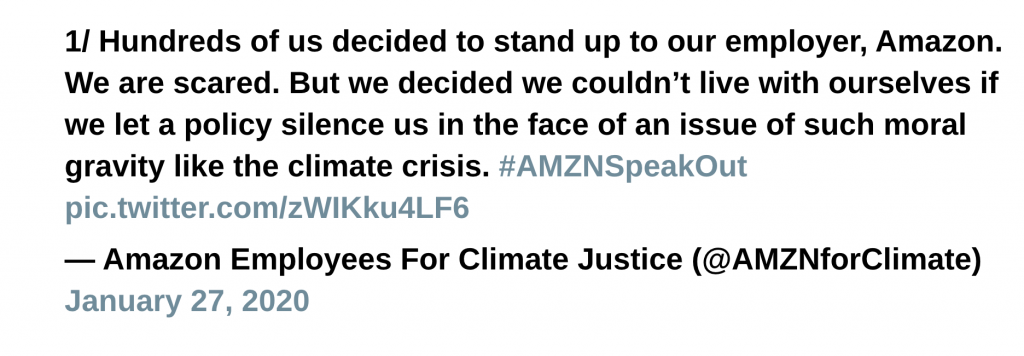If you’ve ever wondered what impact your use of the digital world has on the environment, I can share one nugget: every one of Facebook’s 2.85 billion users produces 12 grams of carbon dioxide annually by using the platform. In fact, Facebook is now one of the biggest consumers of energy on planet with its energy use now more than ten times the amount of a decade before.
The tech sector as a whole is responsible for 2 to 3 per cent of global greenhouse gas emissions. Yet, much of the attention at COP26 the United Nations Climate Change Conference this week has been focused on traditional manufacturing and transportation industries, rather than looking too closely at the impact of newer technologies and the climate price of the convenience we have all come to rely on.
Amazon, for example, depends on fuel-burning planes and trucks to ship its billions of items around the world. In fact, it announced earlier this year that it would buy 11 jets to get deliveries to its consumers faster. Amazon’s emissions from fossil fuels soared 69% last year: the company disclosed its businesses emitted 60.64 million metric tons of carbon dioxide in 2020 — the equivalent of burning through 140 million barrels of oil.
The problem of the data centres needed for Big Tech
As we become more and more reliant on computing-intensive services like Amazon, the need for storing and processing the data they require dramatically increases. The last few years has seen a boom in the construction of data centres whose high electricity and water consumption have a huge environmental impact. (Data centres that mine for the cryptocurrency Bitcoin alone consumed up to 0.3 per cent of the world’s electricity in 2019, as much as Belgium).
Nowhere is the problem of the data processing demand seen more clearly than in the example of Ireland. Ireland is already Europe’s data centre capital, with Amazon, Google and Microsoft having operations there. Dozens of data centres have opened in recent years, bringing the total to 54, with a combined power capacity of 642MW. Another ten centres are under construction, including a €1bn (£845m) Amazon hub, that will add 202MW, and a further 31 centres already have planning permission, which would add another 629MW.
“The data centre industry is growing so fast it’s hard to fathom. But somehow the tech companies get far less attention than aviation or fossil fuel companies”
Professor Patrick Bresnihan, Maynooth University
Worldwide, data centres consume about 2% of global electricity, a figure set to reach 8% by 2030. But, by 2028 it is estimated the surge in data centres, and other large users, will consume a huge 29% of Ireland’s electricity. It is already one of the EU’s worst carbon emission offenders and faces fines of more than €250m for missing 2020 targets on reducing greenhouse gas emissions.
AI’s energy usage is a hot topic
AI is a big part of the data centre problem. It’s often compared to the oil industry: data, like oil, once refined can be a hugely lucrative commodity. And like oil, it’s clear that AI has a big environmental impact. Training artificial intelligence is a highly energy intensive process, AIs are trained via deep learning, which involves processing vast amounts of data. In order to teach machines something as complex as human language, for example, an AI is given billions of written articles so that it learns to understands the meaning of words and how sentences are constructed.
In the past year, more and more researchers have sounded the alarm on the exploding data costs of deep learning. New estimates suggest that the carbon footprint of training a single AI is as much as 284 tonnes of carbon dioxide, equivalent to five times the lifetime emissions of an average car.

In 2018, OpenAI found that the amount of computational power used to train the largest AI models had doubled every 3.4 months since 2012.
Big Tech and ‘Greenwashing’
The Big Tech giants are all stepping up to talk publicly about their environmental efforts following years of groups putting pressure on big corporations to tackle the climate crisis. Amazon, Microsoft, and Google have each developed a plan to address their contributions to climate change, widely promoting them in extensive marketing campaigns.
In Facebook’s second annual sustainability report published earlier this year, the company reported it had hit its goal of all of its operations being supported by 100% renewable energy. Amazon also has set its own 2030 deadline to reach 100% renewable energy, and to be net zero carbon by 2040, but its renewable commitment only covers its own operations and electricity use. It leaves out its supply chain which, in Amazon’s case, is more than 75% of its overall carbon footprint. Allegedly, Amazon has threatened to fire employees for speaking out about the company’s climate policy after they called for strong renewable energy commitments.

In 2012, Google set a long term goal to purchase enough renewable energy to match its electricity consumption globally each year, which it accomplished in 2017. It also has a long term ambition for its supply chain to be 100% renewable, but that is an ambition which lacks a specific deadline.
Big Tech to the climate rescue?
In parallel to promoting their green credentials, Big Tech have also positioned themselves as saviours of climate change by claiming their tech solutions could ‘solve’ the crisis.
Industry players say AI, for example, could help make electric transmission grids more efficient. Blockchain technology could allow concerned citizens to track corporate carbon emissions and digital technology could help reduce the world’s carbon emissions by about 17%, according to a report. Satellites could also be used to closely monitor environmental changes including activities such as illegal logging, mining and waste dumping, at sea or on land.
“Tech isn’t the solution, it’s part of the problem.”
Professor Gina Neff, Minderoo Centre for Technology and Democracy, University of Cambridge
But, notwithstanding the trumpeting of their green credentials, and the tech solutions they propose, the exponential rise of the computing power needed to power Big Tech services is a ticking time bomb underneath the entire industry. The AI, on which so many Big Tech products and services depends, now uses 300,000 times more computing power than ten years ago. That growth is only moving in one direction.
Who is accountable for ‘digital pollution’?
So, should we all send less emails? Delete all our photo libraries and watch less streamed videos? Boycott all those Amazon deliveries completely? Perhaps, but sustainable behaviour is not just the responsibility of individuals. COP26 is currently highlighting climate change and calling on countries and corporations to move forward to action, following decades of words. A move to 100% renewable energy, accounting for the whole supply chain, and a solution for the energy impact of AIs and their proliferating data centres, is what Big Tech needs to deliver now.

For more about how Big Tech is changing the way we live, learn and love, and what we can all do about it, pick up a copy of my new book.
